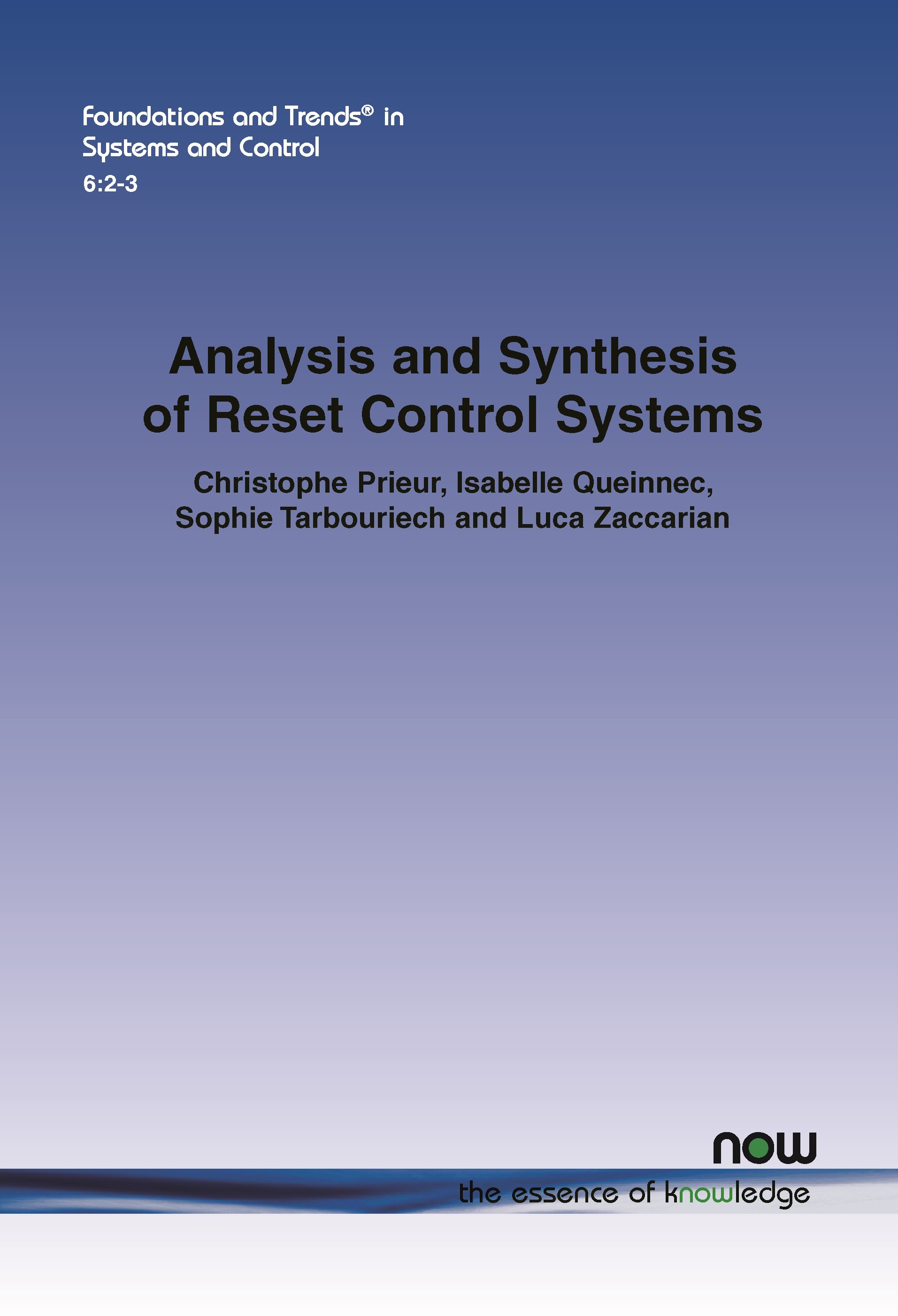Analysis and Synthesis of Reset Control Systems
Christophe Prieur, GIPSA-lab, France, christophe.prieur@gipsa-lab.fr , Isabelle Queinnec, LAAS-CNRS, France, queinnec@laas.fr , Sophie Tarbouriech, LAAS-CNRS, France, tarbour@laas.fr , Luca Zaccarian, LAAS-CNRS, France and University of Trento, Italy, zaccarian@laas.frAbstract
This survey monograph overviews a large core of research results produced by the authors in the past decade about reset controllers for linear and nonlinear plants. The corresponding feedback laws generalize classical dynamic controllers because of the interplay of mixed continuous/discrete dynamics. The obtained closed-loop system falls then within the category of hybrid dynamical systems, with the specific feature that the hybrid nature arises from the nature of the controller, rather than the nature of the plant, which is purely continuous-time. Due to this fact, the presented results focus on performance and stability notions that prioritize continuous-time evolution as compared to the discrete-time one. Dwell-time logics (namely, conditions preventing consecutive jumps that are too close to each other) are indeed enforced on solutions, to ensure that the continuous evolution of solutions is complete (no Zeno solutions occur).
After presenting a historical motivation and an overview of the results on this topic in Part I, several results on stability and performance analysis and on control design for general linear continuous-time plants are developed in Part II. These results are developed by exploiting the well-established formalism for nonlinear hybrid dynamical systems introduced by Andy Teel and co-authors around 2004. With this formalism, by ensuring sufficient regularity of the reset controller dynamics, we ensure robustness of stability with respect to small disturbances and uncertainties together with suitable continuity of solutions, generally regarded as well-posedness of the hybrid closed loop. Throughout Part II, we provide several simulation studies showing that reset control strategies may allow to attain better performance with respect to the optimal ones obtained by classical continuous-time controllers.
Finally, in Part III we focus on planar systems, that is reset closed loops involving a one-dimensional linear plant and a one-dimensional reset controller. For this simple interconnection interesting stability conditions can be drawn and relevant extensions addressing the reference tracking problem are introduced, illustrating them on a few relevant case studies emerging in the automotive field.
Analysis and Synthesis of Reset Control Systems
A reset controlleris a linear controller whose output is reset to zero whenever itsinput and output satisfy an appropriate algebraic relationship. It has widespread industrial applications and is used in many modern day control systems.
This monograph provides a comprehensive survey into three parts. Part I provides an historical literature review and presents some fundamental results. Part II deals with nonplanar reset systems and covers several resetrules that may be used to augment high-order controllers for plants ofany order. It also provides several simulationstudies showing that reset control strategies may allow to attain betterperformance with respect to the optimal ones obtained by classicalcontinuous-time controllers.Part IIIfocuses on planar systems andreports on a nontrivial generalizationof the basic mechanisms emerging in Clegg integrators andFirst Order Reset Elements (FORE). Relevant case studies emerging in the automotive field are included.
This monograph gives an in-depth assessment of the state-of-the-art and provides the reader with a starting point for further research into the increasingly important topic of Reset Control Systems.
